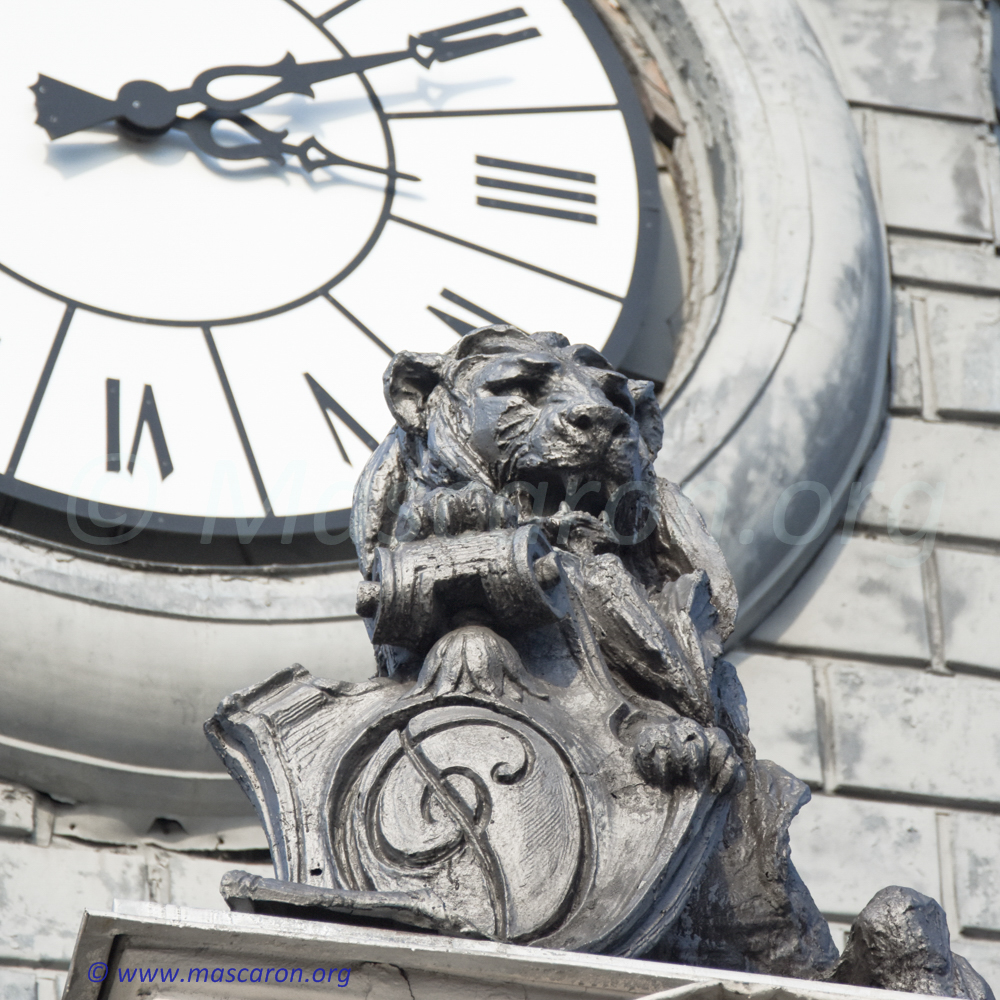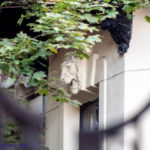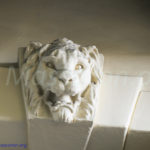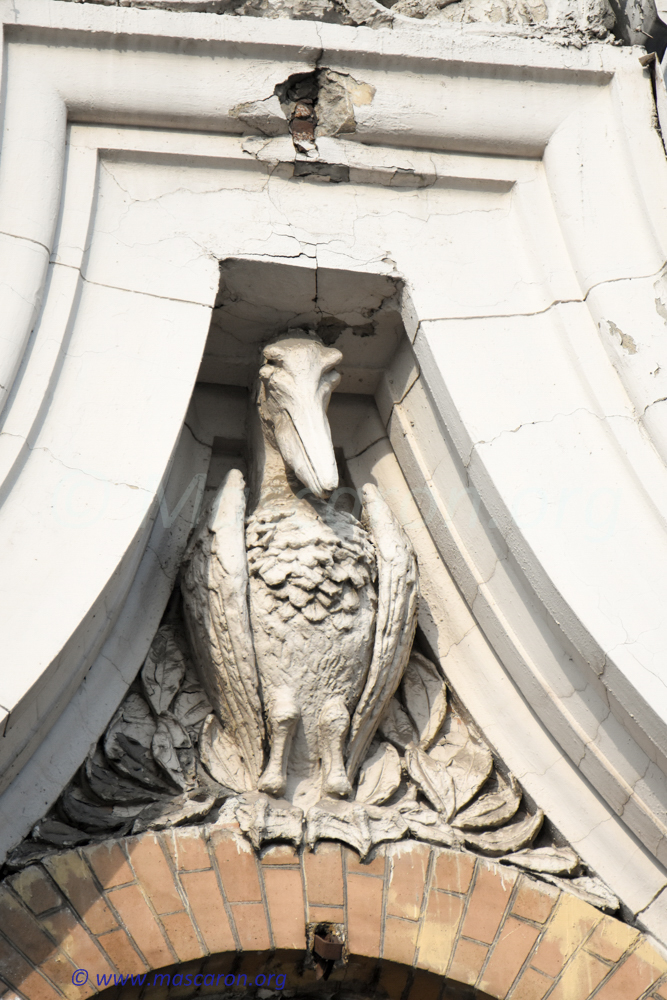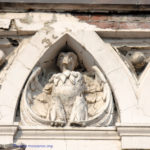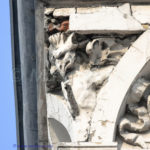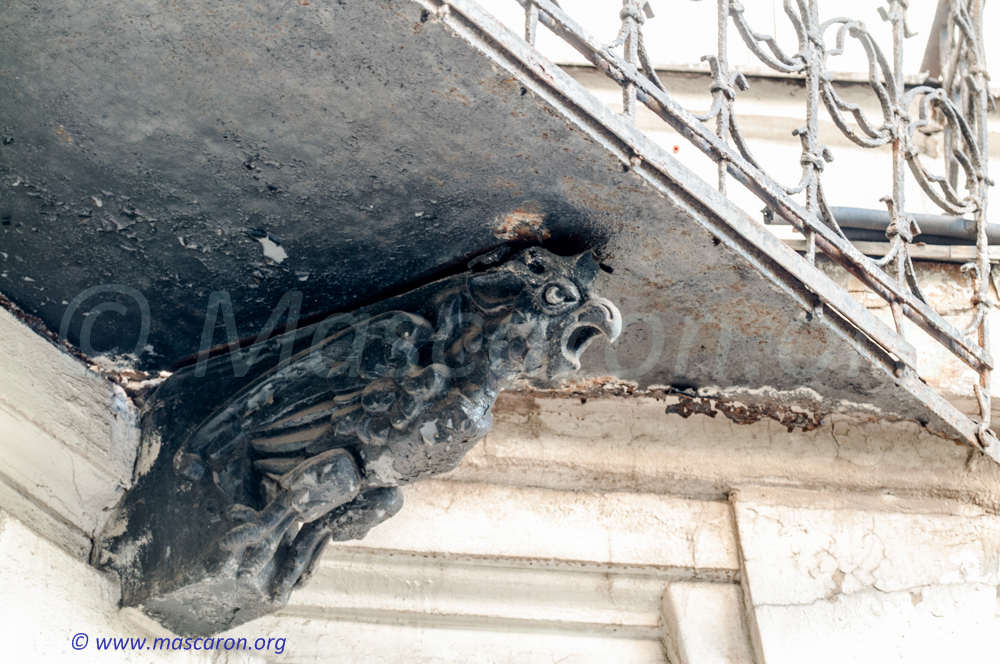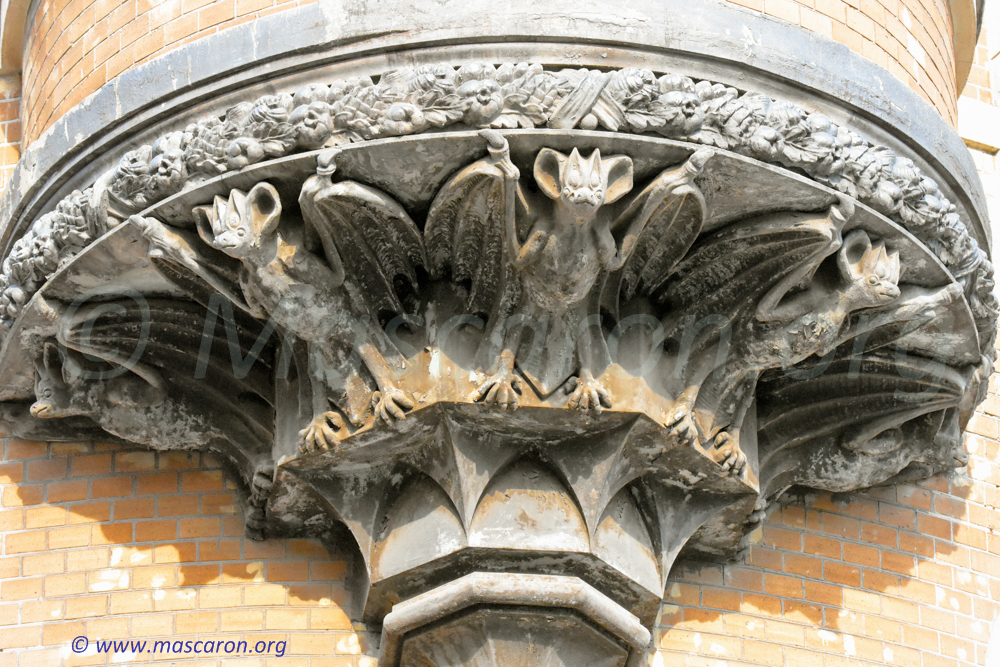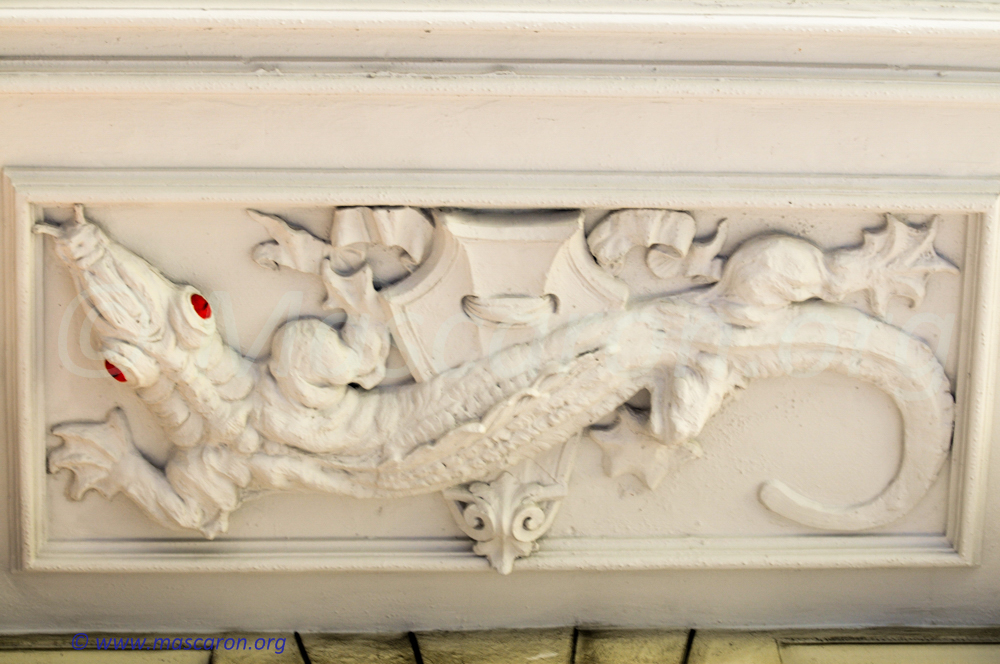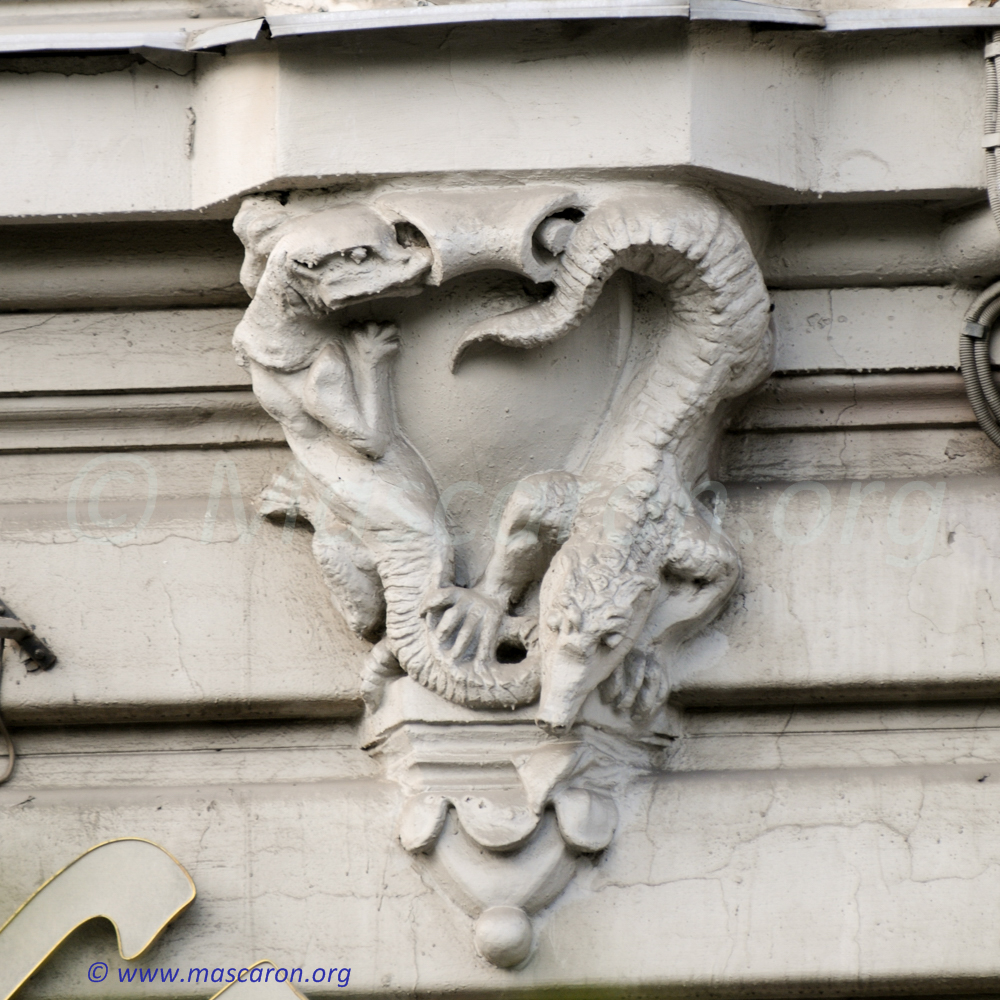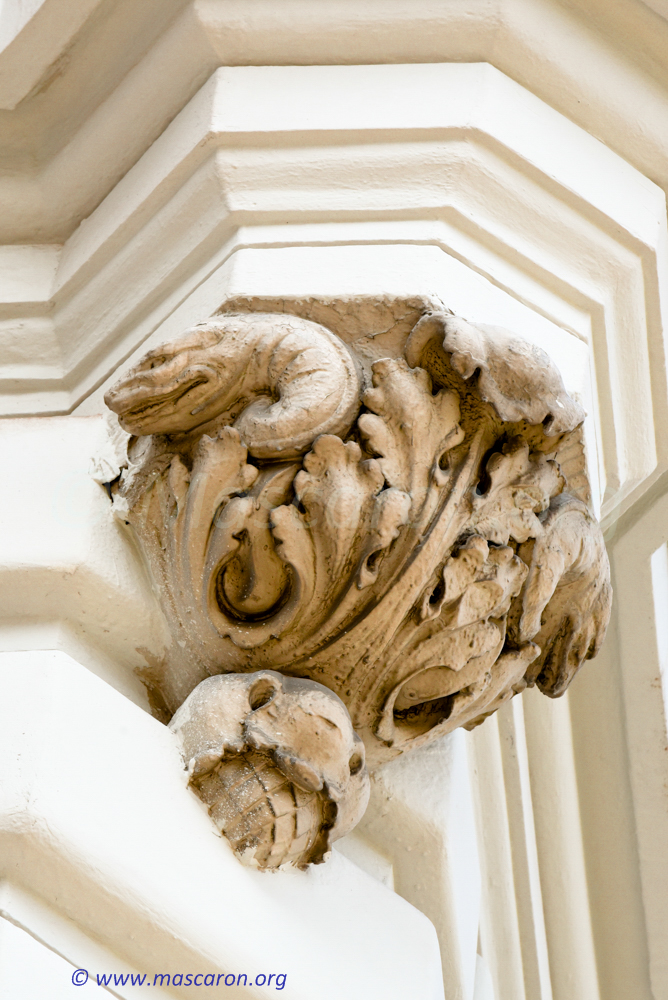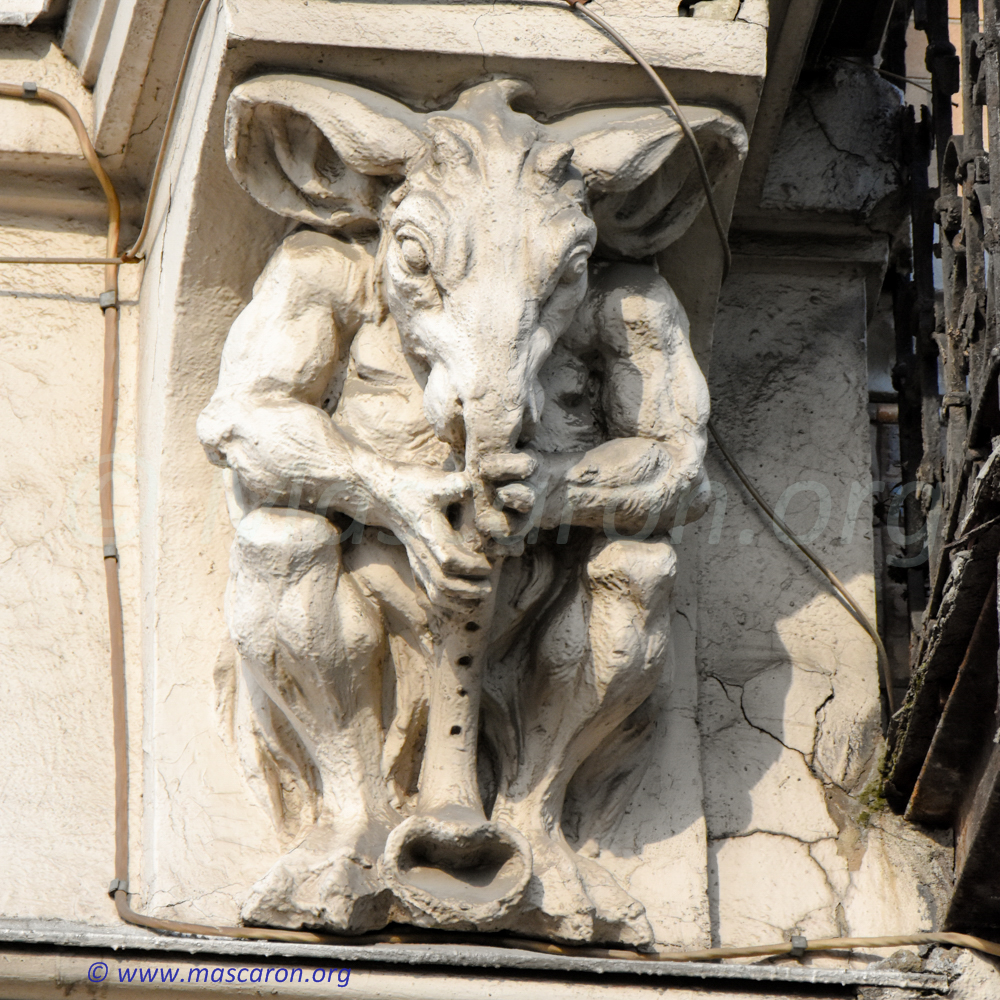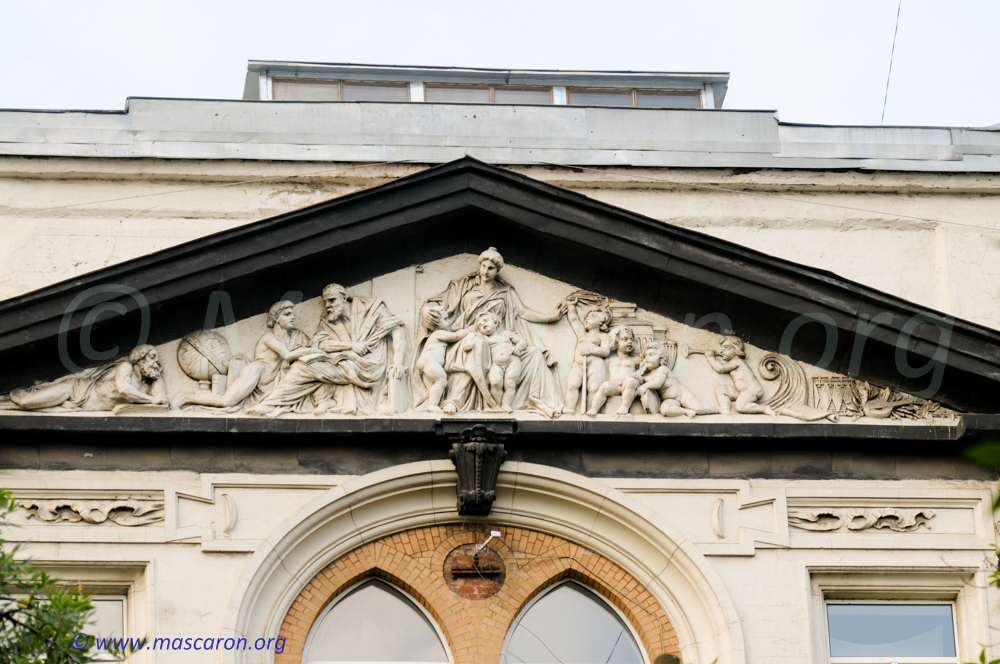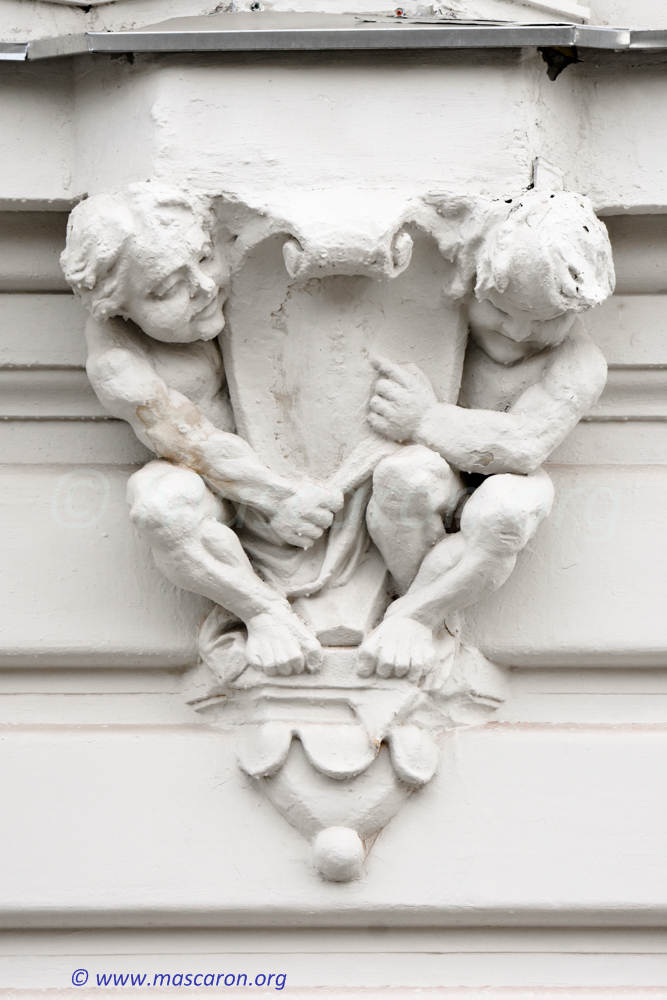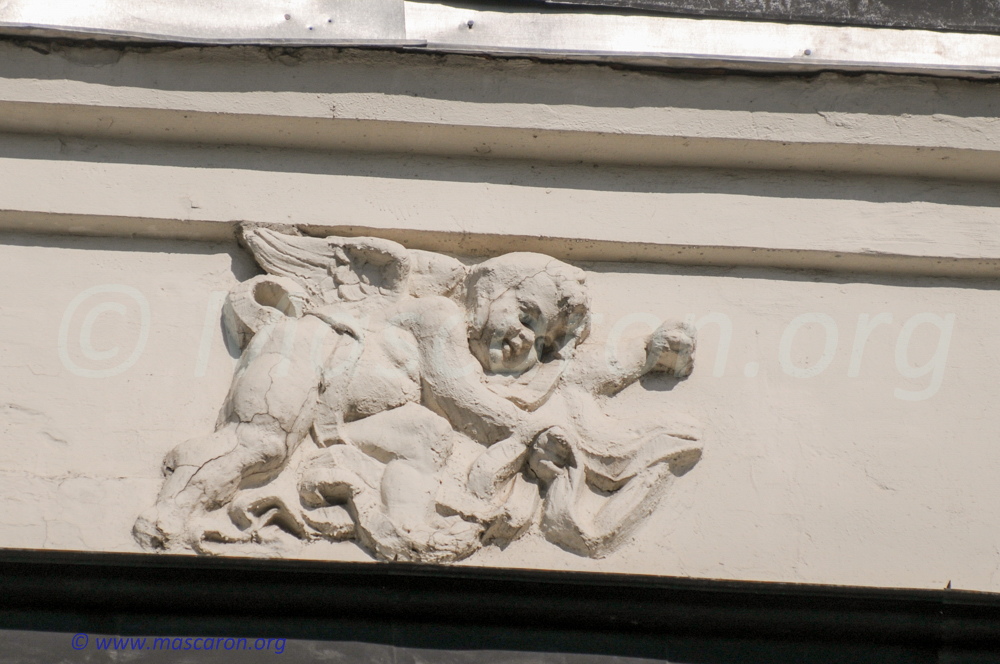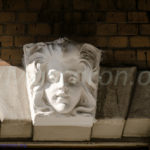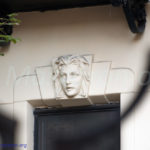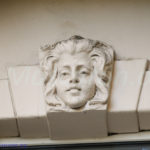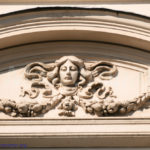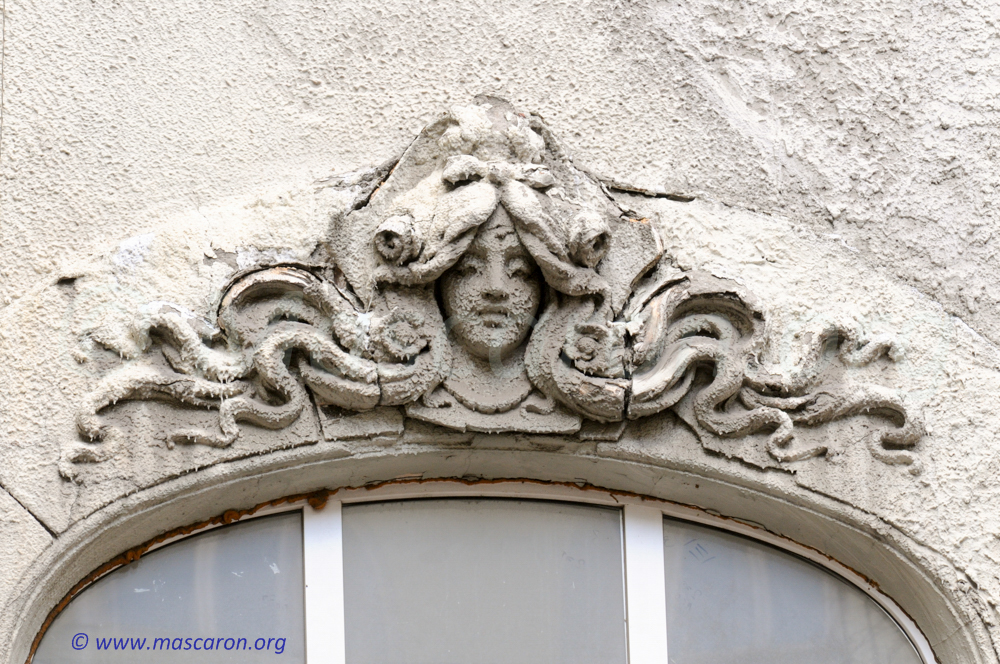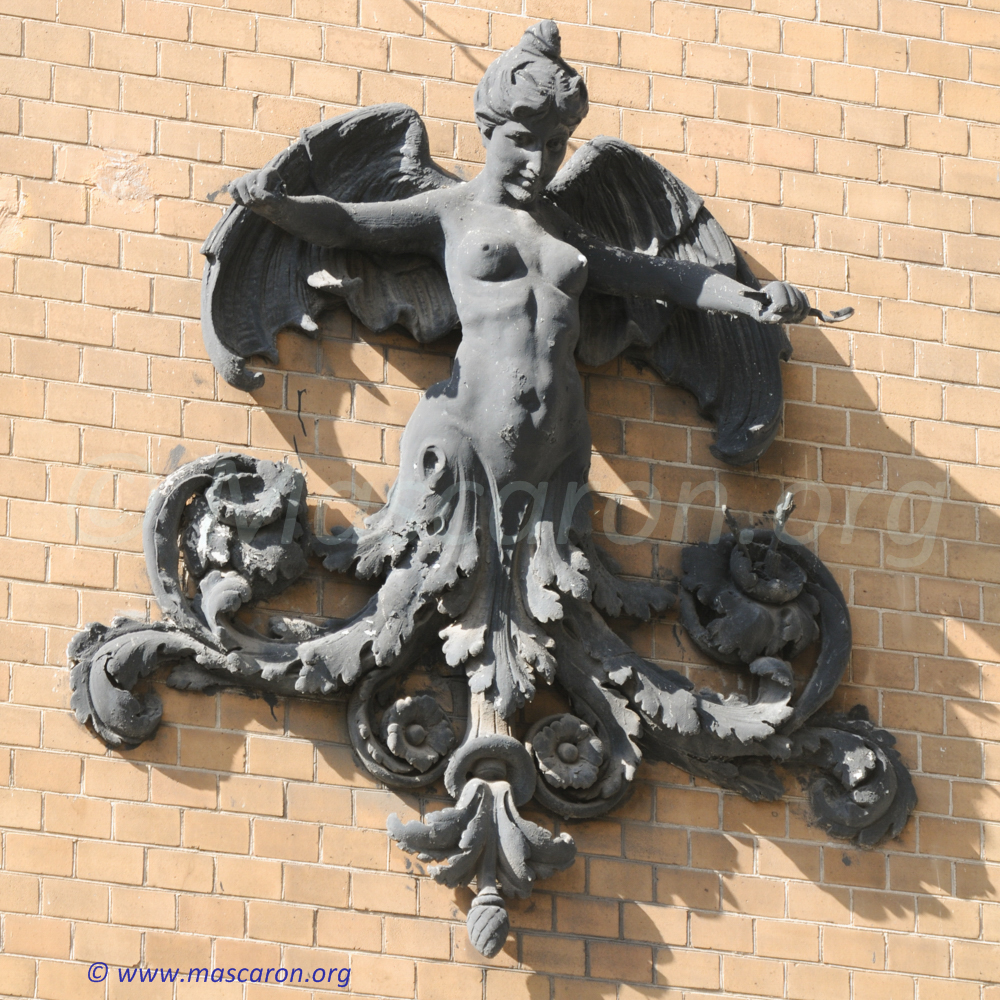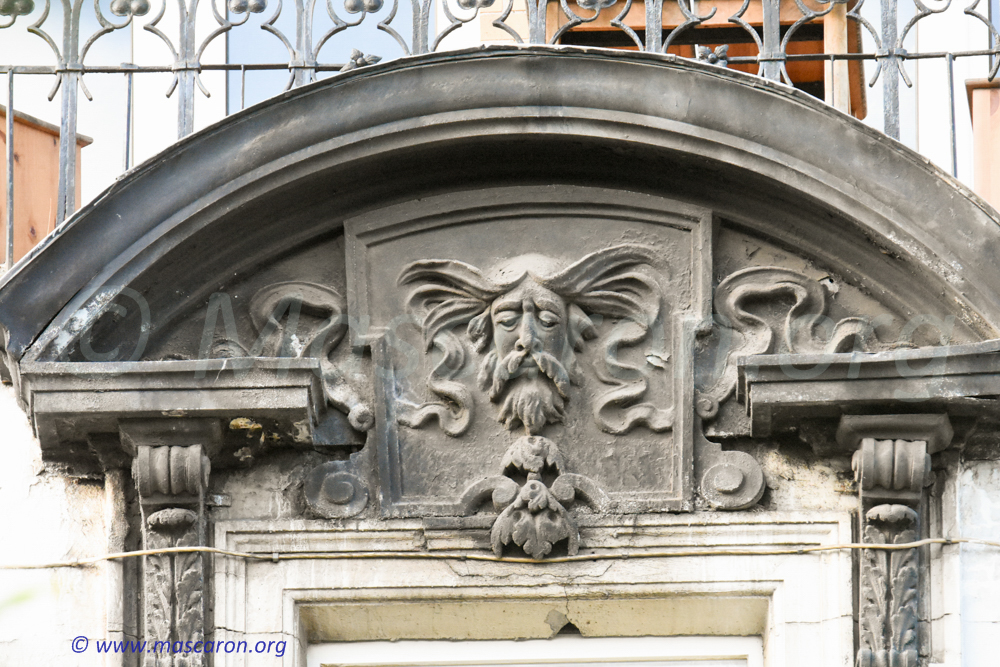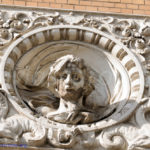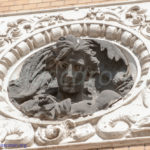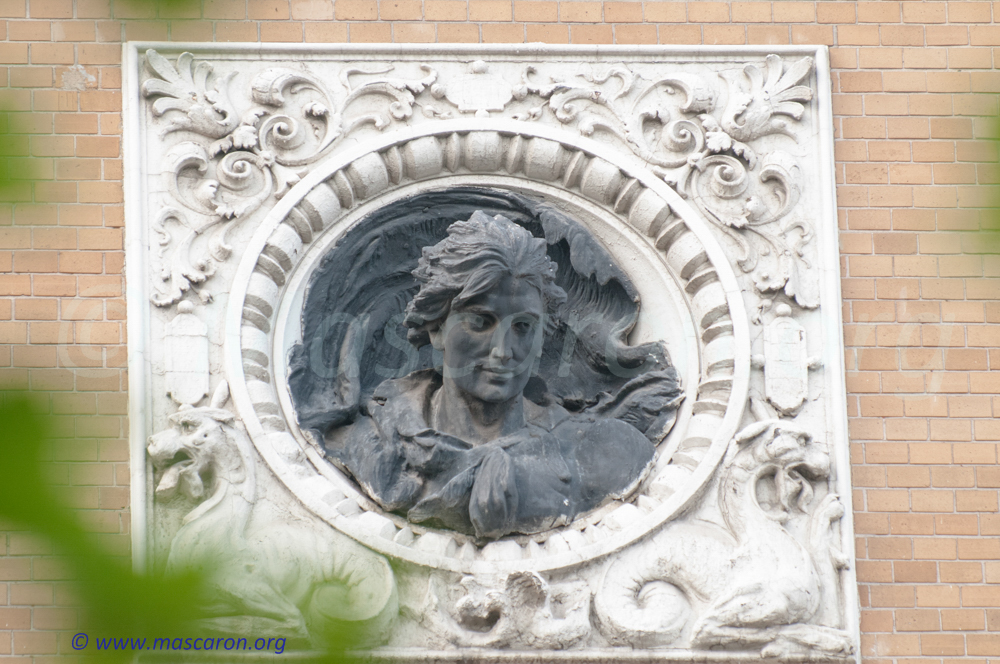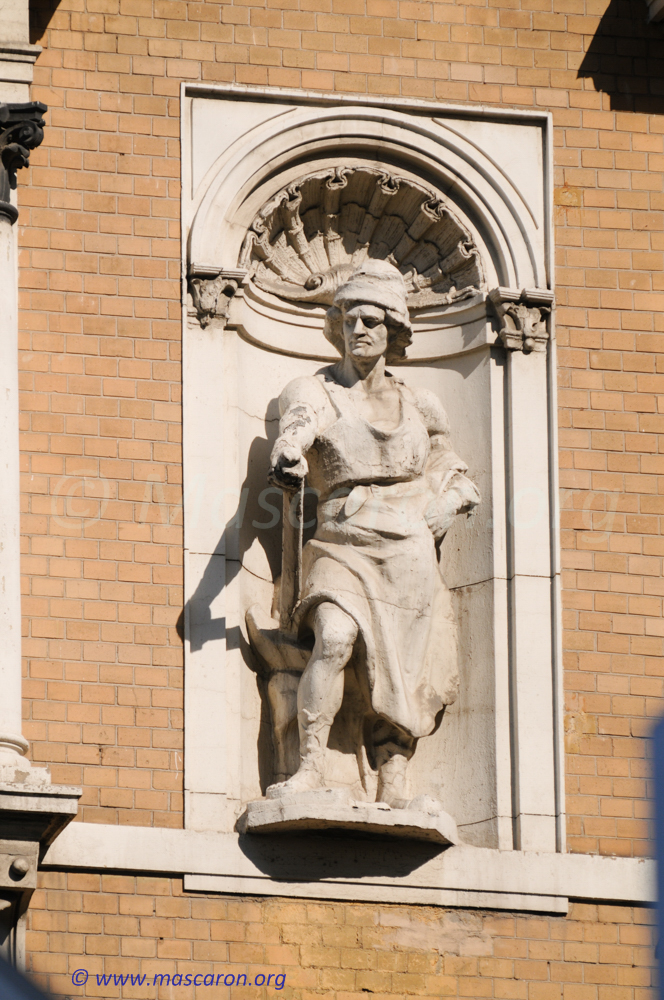Sretensky Boulevard — profitable house of Insurance Company Russia.
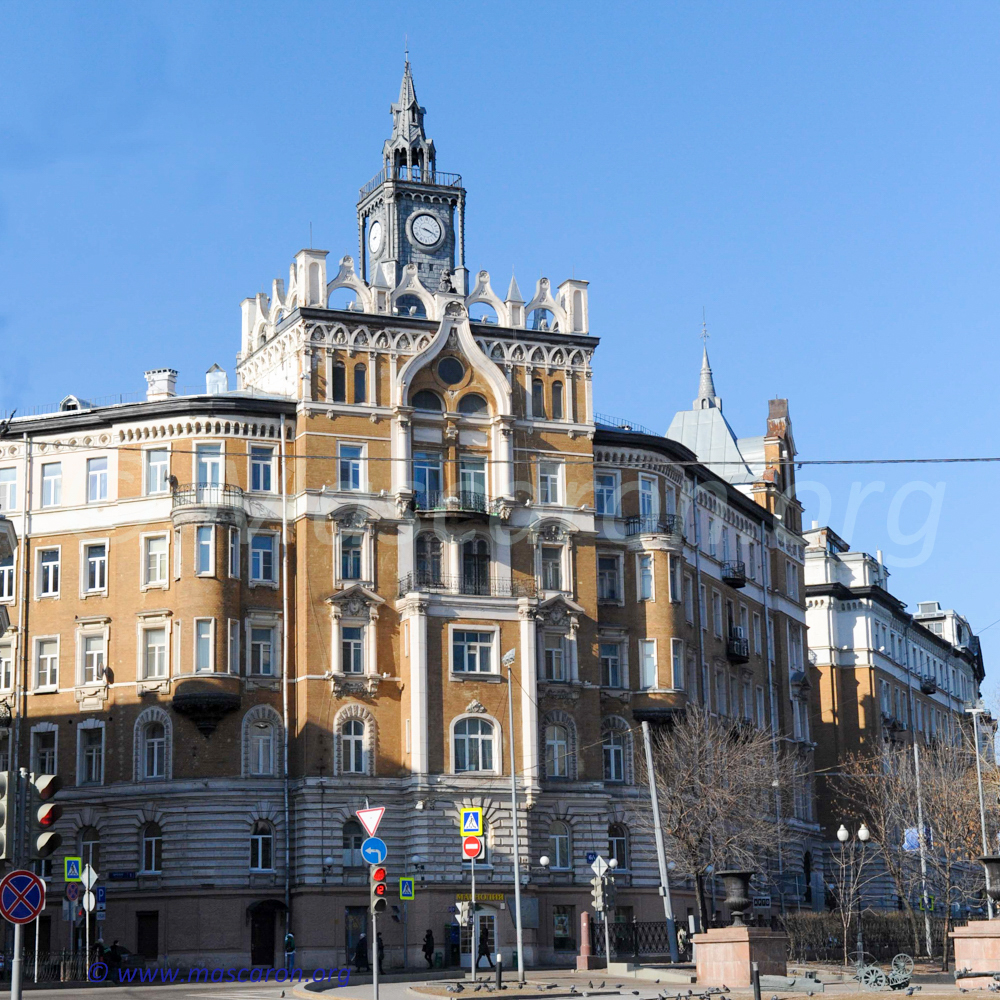
«… Architecture — also a chronicle of the world: it speaks when a songs and stories already silent, and when nothing about the deceased folks is saying. Let it at least as a excerpt appear among our cities in the form in which it was … so when you look at it thoughts of his past life are dawned on us … and to cause us to thank for its existence, the former stage of our own exaltation. «
Nikolai Gogol.
Comparing architecture with stone chronicle it would be logical and quite rightly compare and decor on the facades of buildings … with illustrations on the pages of this chronicle. These illustrations provide memorable images, and give a unique flavor to the architectural pages. Often decor on the facades is the independent works of art that deserve attention and a separate study.
The images on the facades of our cities and encrypted in them signs can open to attentive eyes an unique messages which architects or customers would sometimes bring up to readers dealing with this «literature». It could be simply a heraldic signs and symbols identifying the owner of the sacrament to a particular professional class, or emphasizing a certain artistic style or a historical event.
In Moscow, perhaps, one of the richest on such architectural illustrations — facade decorations — is a profitable house of Insurance Company Russia on Sretensky Boulevard. The house itself also deserves recognition and as an architectural and as unique for its time engineering creation: You can easily find descriptions about the artesian well, and its own electrical substation and elevators, and even about the centralized air conditioning system.
This apartment house, in fact — the entire block between Bobrov lane and Sretensky Boulevard was built in just three years (1899-1902). And without any in-situ concrete usage — there is a lot to learn! Insurance Company was founded in 1881 by decree of Emperor Alexander III year, and in the early 20th century it has been active not only in Russia but also in other European countries, there was also a branch in New York. In addition to insurance business the company actively invest in real estate, and so due to it this Moscow building was appeared — tenement house of Insurance Company Russia on Sretensky Boulevard.
Initially, Insurance Company Russia was really planning to build a house-quarter occupying fully acquired land, but at the request of the Moscow fire brigade had to make a change in the project, and build two buildings, equipped internal passing way for fire brigades. In fact, thanks to the Moscow city fire “office” another great artistic monument was founded — a great cast-iron grille, designed by the architect O. Dessin (Otto Dessin). And the house of Insurance Company Russia as itself has deservedly become a unique specimen of architecture of the early 20th century. Full-time architect of the insurance company N.M, Proskurnin (with an assistance of AI von Gauguin) actually reinterpreted and embodied in the form of the tradition he established the creation of the Russian and European architecture of the 19th century. It is impossible not to mention that even such «architectural reformer» as Le Corbusier praised the building: in the early 30’s, he proposed a new plan for the total renovation of Moscow based on his ideas of «modernist» architecture. And there were only two objects he proposed to save — the apartment house of Insurance Company Russia and the Kremlin.
You can find currently «zoo» consisted of various animals and birds, as well as images of the ancient allegory and characteristic of Art Nouveau style women masks on the facade of the house of the Insurance Society Russia. There are even angels here. (www.mascron.org project is not considered vegetable and ornamental decor, which is also present on the facade of house.)
Unfortunately we have to admit that the house has lost its crowning central facade facing the boulevard, sculptural, located directly above the tympanum. At least some idea, impression about this sculpture could help to create postcards dated 1903 with the image of the façade, on which you can discern its contours. Lovers of antiques can easily find these cards in the network.
Zoo at house Russian Insurance Company.
Lion’s sculpture is placed on corner tower under the clock. The lion holds a shield with has «engraved» on it letters Russian letters COP (which actually mean — Russia Insurance Company). This lion is clearly bears the symbol of the guard here — one of the symbols, historically associated with the image of a lion. (As part of the project is planned www.mascaron.org overview of the history of the image of a lion in the architecture, and in Moscow in particular).
This guard is so literally realized its aim, that a few months he did not allow even the staff to manage the clock: apparently, the clock spotted at the same time so long enough. Another lion — mascarones with the muzzle of a lion «crouched» in the courtyard, more precisely in the passage between the buildings.
On www.mascaron.org site sufficiently to indicate in a row street — «Сретенский» and switch to picture mode to see this Mascaron immediately. By selecting it, the picture can be enlarged; also exact location on the map can be viewed.
Perhaps the only pelican (then, almost anatomically accurate representation) on the facades of buildings of Moscow lives below guard-lion in a kind of alcove formed by the decorative facade of the Gothic design. In many cultures an image of a pelican since ancient times was associated with charity and self-sacrifice. In the tradition of oriental countries pelican is considered a sacred bird symbolizing nobility and even parental love.
As to the house on Sretensky Boulevard, the pelican image understanding in context of the Rosicrucian teachings is more important essential: Knights’ Rose and the Cross «(18th degree) also were called and as» white eagle knights and pelican «, and the image of the pelican was associated with a» disinterested desire for beautification «. It is no accident that in the emblem of the Moscow Orphanage, founded in 1763 manifesto of Catherine II «On the establishment of the Moscow Orphanage» and was attended by the pelican, feeding three chicks. To raise funds for «Moscow Orphanage» on playing cards (and later other products) was put even a special stamp, depicting a pelican (with chicks) with the words «not sparing himself, feeds the chicks.» But our pelican is showed without chicks, and the house itself is not related c Board of Trustees, «Orphanage», so it remains only to conjecture about what the symbol carries the pelican.
Some others images, marked in the review jointly with the pelican can be interpreted as a Masonic «presence» signs, but any attempt to find clear evidence or failed to mention it was failed . It is not surprising: after all, the Masonic society was closed from the outside attention, and it well kept and still keeps now its secrets, and only persons devoted to “signs” could indicate its presence.
Birds are accommodated near the pelican in a slightly smaller niches — quite sweet kind fledglings are likely hawk family.
Hawk placed in the corner niche already has a more impressive, even more aggressive, intimidating appearance. There are still representatives of birds of prey, which are located under the balconies in the passage between the buildings, and performing the function of a support bracket for balconies. Most likely, these birds should be attributed to nocturnal hunters — owl family.
In many cultures, the owl was associated with the dark forces of the night and carried bad news. But in the Greco-Roman tradition, which is then taken by many European «doctrine» and the community (including of those mentioned above), the owl — a bird of the night and the forest, but symbolized wisdom and scholarship. It is unlikely that an owl on the house of Insurance Company Russian was intended to carry some bad news: in 1902 it was necessary to possess exceptional foresight to already anticipate the subsequent turmoil in Russia.
At the bottom of bay windows on the corner facade two family of bat are placed. Unlike Pelican, a symbol of a bat, like an owl in the European, antique and eastern (Chinese) tradition has a different meaning, until the opposite. If the European tradition of a bat is associated with night and sorcery, superstition and fear, in ancient Greece and Rome bat associated with alertness and insight.
Not by chance in the lobby of the FIS (Foreign Intelligence Service ) the emblem of Service — bat decorates the floor! (A photo can be easily searched in the network.) But what does mean bats on the House of Insurance Society Russia – is a question! Perhaps we should pay attention to the Greco-Roman tradition of symbolism to properly «read» meaning of owls and bats. In addition, pay attention that «representatives of the night» — and bats, and the owl made stylistically the same, and different from the other — day birds.
Serpentarium of House of Insurance Company Russia.
Remarkable salamander is hidden under a balconies to prevent any views to it. Salamander has been traditionally considered as a symbol of the insurance business. Perhaps it stems from an even earlier tradition, attributing salamander property does not burn in the fire, and namely fire were associated with first insurance company. But the Insurance Company Russia was oriented to life insurance as opposed to already existing Russian companies that insure property and, above all, about the fires. In addition, if the salamander on the House of the Insurance Company Russia was designed to emphasize insurance character that is its covert location — under the balcony, and, moreover, a balcony in the courtyard, can only cause surprise and encourage to find other hidden meanings of image.
Perhaps this is the ancient alchemical symbols of knowledge, and perhaps a symbol of resistance, or guardian of the faith. But from the side of the boulevard there are two other “individuals”, most likely, too salamanders.
However, someone guesses the small crocodiles in them, so that is again only guess about idea of the architect and the customer!
Images of snakes is even more mysterious. These reptiles, obviously, in this context, have no relation to medicine, and not to a caduceus (a symbol of trade in the hands of the god Mercury) they entwine. So the House of the Insurance Company Russian left another puzzle about the meaning of these symbols.
And it is quite a mysterious way seems obscure creatures. «Slonosel»: In this figure there is also an elephant (trunk-flute), muzzle and ears of a donkey, and (a little later on in this review, whether reasonable ?) there has not been without a man.
Socrates and Aristotle.
On the tympanum of the gable of the main facade is located the sculpture. If we consider carefully the face of male figures on the left side of the composition, it is possible to grasp the similarities of these characters with the image of Socrates and Aristotle (as they are in most cases have been taken to represent).
Obviously this is an allegory of education and knowledge. The center of the composition and its right part, could be interpreted as an allegory of motherhood, caring, and art — children holding musical instruments, and the background can be seen the samples of architectural details. These images of children are present as separate characters — two of them support a cartouche on which the fish displayed. And they themselves hand-held the paddle. So the theme of water and clearly read in the composition.
The symbolism of the fish and the water has ancient origins, present in almost all civilizations and highly versatile.
Also two young creatures, with a surprisingly gentle for their persons «pumped» muscles, as if imitating the neighboring salamanders (or crocodile?), keep some semblance of heraldic cartouche sewn at the base of a small column.
Compare muscular bodies of these «kids» and «slonosla» involuntarily suggests some of their «relationship» … Is it a coincidence or an accident would be curious to know.
There are fifth «baby», but to see it rather difficult — practically he is located on the roof, so he can be noticed from afar, from the other side of the street Sretenka. This is the same kid with almost angelic face, but this time his angelic «accessory» is already clearly indicated by the wings.
Most likely, repairs of the plaster have distorted some details, so it is difficult to clearly understand what the angel so diligently engaged — dynamism, some movement in this small composition are clearly readable.
On the facade of the house you can find many women’s heads — several mascarons and individual panels.
These images are largely consonant with female images, creating at the same time by architect Walcott and included later into many publications as examples of Art Nouveau (1902-1903 gg, Prechsitensky Lane House Gutheylya). Remarkable that one female mask at house of Insurance Company Russia in located in courtyard, and again we have to regret not respect for her during repair work.
Yet still viewed roses adorning her hair, and curly hair.
There is another female image — the winged goddess. It is clearly seen that she held something in her hands that could help decipher its «destiny». One would assume that the winged goddess is somehow linked to the Scythian culture — the earth goddess Api.
Many of such kind of images have been found in the Scythian burial mounds, and some of them also attended palmette from which they grew as it were a goddess. There are different versions about these images on the facade of the House of the Insurance Company Russia, for example — Amazon, which allegedly held a bow and arrow (?). But more likely, perhaps, it is Greek Symbols — well-known Greek goddess of victory Nike.
There are three men’s masks (unlike Walcott’s mansion ), made of the same style of Art Nouveau at face of the House of the Insurance Company Russia.
One of them is located below tympanum of the pediment. Noteworthy is that the sculptures of two other masks as if framed by decorative «carved» frame, the bottom of which are decorated by pair of whether griffins, or hippocampus.
These «beasts» as itself are well-defined symbols, but their «reading» in this combination is difficult.
Allegories of technological progress or «Ce maçon»?
Two more «illustration» on the facade of the House of the Insurance Company Russia are very curious. Steam (on the corners of the facade) sculptures of men and women, are located on the west wing of the house (from Milyutinsky alley and adjacent facades Bobrov lane and Sretenskkogo Boulevard). Surprisingly, but there are not any birds, no lions, no reptiles in this part of the house. Accidentally whether such a division of the facade on its «inhabitants’, or it carries some meaning — the question for the researchers!
There are encountered references in some reviews that these growth sculptures are an allegory of technological progress. Who knows … Of course, the house was distinguished by technical innovations for its time, but what about the mouse and owls and other …? There is another interpretation: in many publications and on numerous tours with great pleasure, but under the «big secret» reported: a mason and the apron , shell-pearl, etc., etc. … all this points to the Masonic trail. Again, who knows.
As for the female figure, it is possible that a large gear under her arm, could point to technical progress. But the guise of a female strongly point to ancient motifs. Is not the gear wheel of the Goddess of Fortune «encrypted» here? Probably..
The House of Insurance Company Russia does not get tired, not only admire, but also to ask the puzzle on pages of stone annals!
